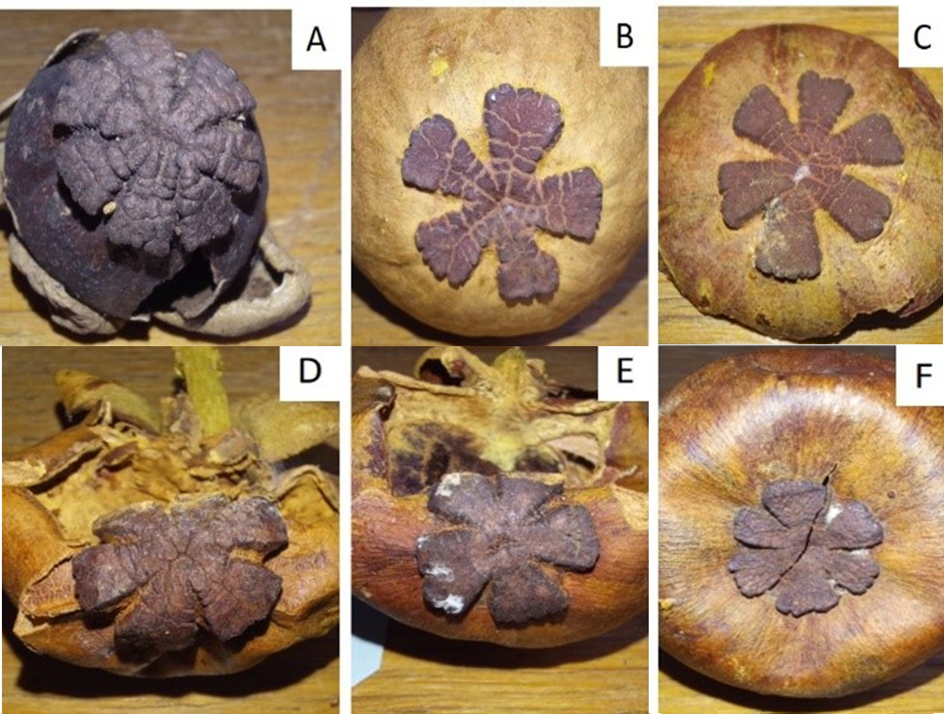MULTIVARIATE MORPHOMETRIC ANALYSIS OF MANGOSTEEN (GARCINIA MANGOSTANA VAR. MANGOSTANA, CLUSIACEAE) AND ITS WILD RELATIVES
DOI:
https://doi.org/10.24823/ejb.2024.2003Keywords:
Clustering analyses, Cultivated tree, Garcinia mangostana, Southeast Asia, Wild relativesAbstract
Mangosteen (Garcinia mangostana var. mangostana) is a dioecious and agamospermous cultivated fruit tree. It has two recognised hypothetical wild ancestors, Garcinia mangostana var. malaccensis and G. mangostana var. borneensis, distributed in the lowland dipterocarp-dominated forests of Sumatra, the Malay Peninsula, and Borneo. The highly similar morphological characters between the cultivated and wild varieties have posed challenges in identification. Additionally, Garcinia penangiana is often mistaken for G. mangostana var. malaccensis, and G. venulosa is regarded as morphologically similar to G. mangostana var. borneensis. In the present study, we conducted morphometric analyses of Garcinia mangostana var. mangostana, G. mangostana var. borneensis, G. mangostana var. malaccensis, G. penangiana and G. venulosa. We assessed the efficacy of morphological characters in combination (vegetative–male flowers–female flowers) in distinguishing the taxa as recognised in the current taxonomy. In our morphometric analyses, we found that Garcinia penangiana and G. venulosa are well delimited and congruent with their current taxonomic designations. A combination of vegetative and male-flower characters provided the most definitive delimitation. We recovered the specific coherence of Garcinia mangostana, but the infraspecific delineations of G. mangostana var. mangostana, G. mangostana var. borneensis and G. mangostana var. malaccensis are not supported.

Downloads
Additional Files
Published
Issue
Section
License
Copyright (c) 2024 T.L. Yao, M. Nazre, J. Duminil, C. Loup, J. Munzinger

This work is licensed under a Creative Commons Attribution 4.0 International License.
Please read our Open Access, Copyright and Permissions policies for more information.

